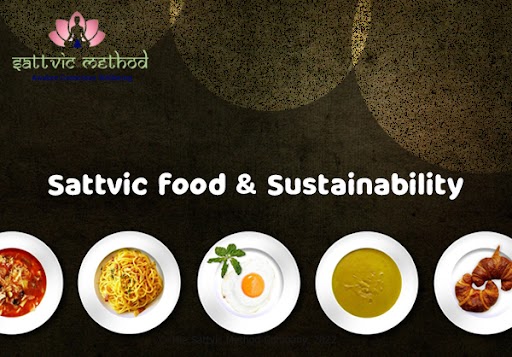Sattvic Food & Sustainability
Sattvic food, rooted in ancient yogic philosophy, promotes not only physical and mental clarity but also aligns closely with modern environmental values. It is a diet centered around fresh, local, seasonal, and naturally cultivated plant-based foods. What makes the sattvic lifestyle particularly appealing in today’s world is its profound link to sustainability. At a time when the planet faces ecological crises due to industrial farming, deforestation, and excessive resource consumption, choosing sattvic food offers a powerful step toward a more harmonious relationship with the Earth.
At its core, the sattvic diet emphasizes simplicity. It encourages the consumption of fresh vegetables, fruits, whole grains, legumes, nuts, and seeds. These ingredients are not heavily processed or transported long distances, reducing the reliance on fuel-intensive supply chains. By choosing local and seasonal foods, practitioners of sattvic living naturally support regional agriculture, which helps cut down on the environmental costs associated with mass production and long-distance transportation. Buying from local farmers also promotes soil health, biodiversity, and ethical food systems that benefit both people and the planet.
Another important aspect of sattvic eating is the minimal use of spices and condiments. Unlike many modern cuisines that rely heavily on imported seasonings, the sattvic approach uses only a few, natural, and often locally available spices to preserve the integrity of the food’s natural taste. This practice not only enhances the nutritional value of meals but also reduces packaging waste and the carbon footprint linked to globally sourced ingredients.
Sattvic meals are typically prepared with mindfulness and consumed in moderation. There’s an intentional avoidance of food waste—both in preparation and in portion size. Food is seen as sacred and is treated with respect, further minimizing unnecessary consumption and wastefulness. Composting kitchen scraps is often integrated into sattvic lifestyles, returning nutrients to the soil and reducing landfill waste.
In terms of environmental impact, plant-based sattvic food has a much lower carbon footprint than animal-based diets. The meat and dairy industry is responsible for significant greenhouse gas emissions, water pollution, and deforestation. Sattvic food, being vegetarian and predominantly vegan, helps reduce these pressures. It conserves water, requires less land, and lowers methane emissions, all of which are vital to curbing climate change.
Furthermore, by steering away from processed and packaged foods, sattvic living reduces plastic waste and energy consumption involved in manufacturing and packaging. This aligns with a zero-waste or low-impact lifestyle, making sattvic eating not just a personal health choice but an act of environmental stewardship.
In conclusion, sattvic food is a conscious and compassionate way of eating that nourishes the body while nurturing the planet. It is a powerful example of how ancient wisdom can provide answers to today’s global challenges. By embracing sattvic principles, individuals not only embark on a path of mental and spiritual clarity but also actively contribute to a sustainable and regenerative food culture.




